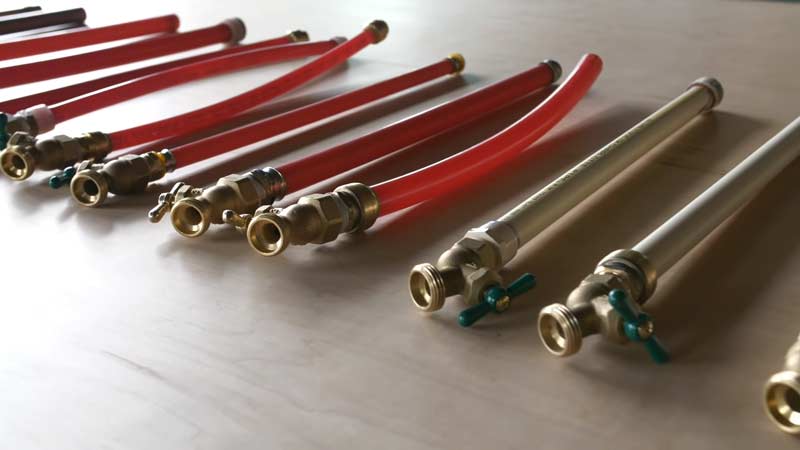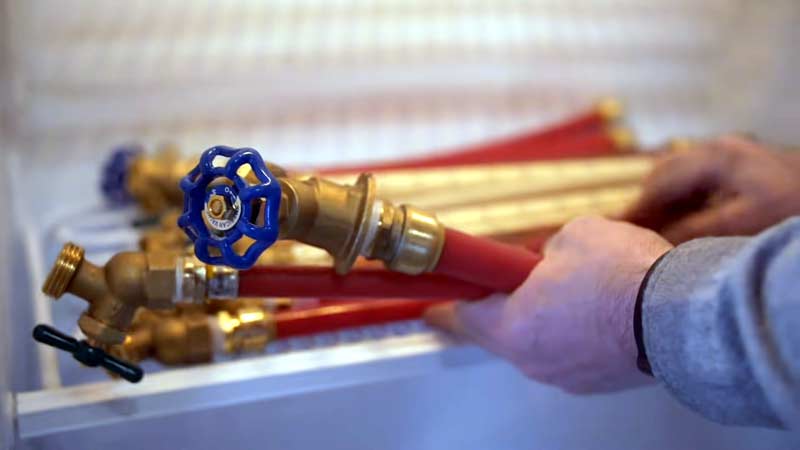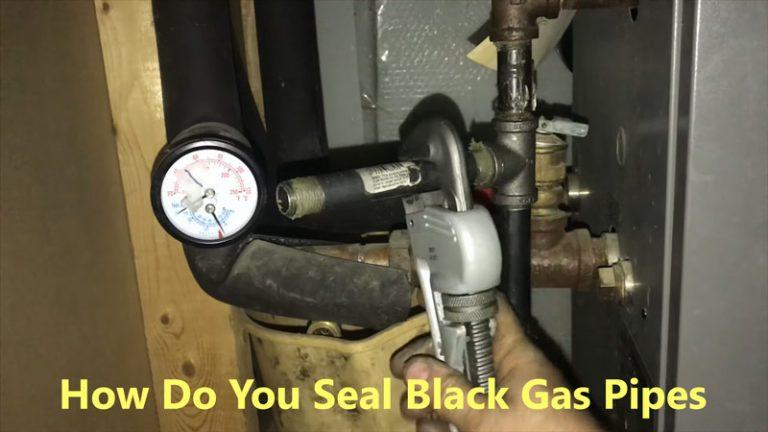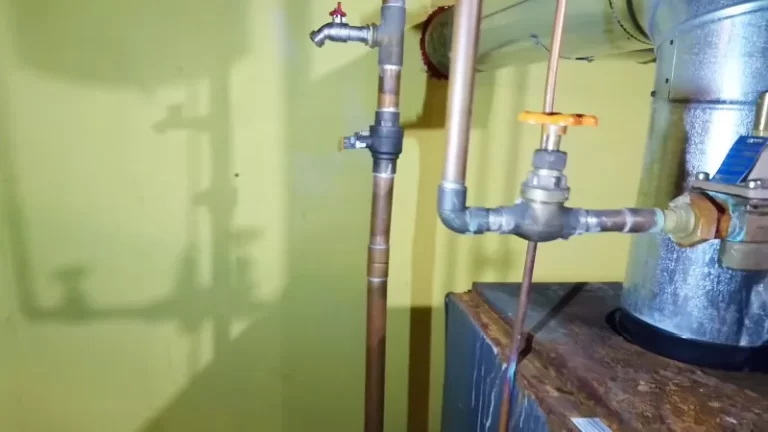Comparison of Copper vs. PEX and SharkBite

For most of plumbing history, any homeowner who has remodeled or repaired plumbing fixtures would have used galvanized pipe or copper pipe and fittings for water supply systems. Galvanized means learning complicated joining techniques; copper meant mastering the delicate art of sweating copper fittings (the various connection points of elbows and tees connecting copper tubing) with a flashlight and solder. While both are skills to learn, many novice plumbers would prefer the skilled but expensive work of a professional plumber at this point.
With PEX plastic pipes and push-fit fittings, plumbing is within reach of the amateur plumber. Not only plumbing supply stores but local home improvement stores— Home Depot, Lowe’s, Ace Hardware—are well stocked with both colorful PEX pipes and all those shiny copper pipes. What is going on here? Which one should you choose?
You'll Learn About
Copper and PEX Defined
- Copper Pipe: Copper pipes and fittings can be found in millions of homes and are still used today, often by plumbers. Copper is about 66 percent more expensive than PEX and is readily available at all hardware stores and hardware stores. The higher cost of copper is mainly due to the price of copper in bulk.
- PEX: PEX is the abbreviated name for cross-linked polyethylene, which is a super-tough, semi-rigid plastic tube. For convenience, it’s red for warm, blue for cold, and white for any temperature. These colors are provided only to aid in product installation and subsequent repairs; they do not impart any temperature-related properties to the pipe.
How these fittings work
Sharkbite is a popular brand name for push-fit or plug-in plumbing fittings. With a little exertion, the line drives into the SharkBite and is held set up by little teeth. Between copper and PEX, SharkBite is the only connector that works with copper pipe or PEX pipe.
Couplings for copper
- Buyer
- SharkBites
Couplings for PEX
- SharkBites
- Shrink
- Emphasis
Advantages and Disadvantages of Copper Tube
- Recycled: According to the copper industry trade group, Copper Development Association, Inc. (CDA).
- Stiffer: The flexibility of PEX is great when you want to go around corners, but bad when you need to stomp to a toilet or sink. For that, you either have to use a copper stub out (in fact SharkBite even sells copper stubs outs) or buy special PEX fittings for its purpose.
- More heat resistant: PEX is known to be heat resistant and also be used to solve underfloor heating. But to connect to high-heat services, like your water heater, you’ll need to make that last run with copper or special stainless-steel braided connectors.
- Do not give off toxic fumes: As CDA notes, PEX is plastic and will melt and give off toxic fumes in the event of a fire. Copper has a much higher melting point and does not give off toxic fumes.
- Cheaper Fittings: If you decide to use copper fittings, they are significantly cheaper than SharkBites. For example, a half-inch copper tee costs about ten times less than a comparable SharkBite tee.
- Value of copper: The copper tube that is the consequence of a destruction task can be sold on the grounds that the material is typically adequately important. This does not apply to most building materials that have been stripped from the house and certainly not to PEX pipe.
Pros and Cons of PEX Pipes
- Easy to Join: With PEX, you don’t have to learn how to sweat joints. You can use the SharkBite system, or you can buy a crimping tool that uses copper or steel washers that secure the PEX to brass fittings.
- Easy to Cut: While copper is easy to cut with a rotary pipe cutter, PEX is even easier. A rotary cutter with a razor blade makes quick work of PEX in just a few strokes. Or, even easier, you can cut it with a scissors-like cutter.
- Low Cost: PEX is significantly cheaper than copper pipe.
- Bendable: Half-inch diameter PEX can make bends in a 12.70 cm radius without the application of heat. On straight runs, it has moderate leeway with no range props.
- More Expensive Fittings: No PEX fittings are basically as modest as copper fittings. As referenced above, SharkBite fittings are substantially more costly than copper. In any case, even the “modest course”, involving pointed metal fittings for your PEX, is even more costly than copper, multiple times as costly.
Recommended: PEX over copper
Do-It-Yourself home remodelers might need to utilize PEX pipe over copper for the majority of their pipes work. PEX is not difficult to work with and has practically no expectation to learn and adapt.
With copper, amateurs will find it difficult to solder connections. Given that most copper pipe corrosion occurs near joints, this isn’t an aspect of your plumbing you want to get wrong. PEX compounds are nearly foolproof.
Choosing PEX Connectors

PEX over copper is a foregone conclusion for many amateur plumbers. But the more difficult question is whether to use SharkBite push-fit connectors or the barbed crimp/clamp connectors?
During a major plumbing project, such as replacing whole house plumbing, barbed crimp/clamp connectors will save you significant money, even if you factor in the initial investment in a crimp/clamp tool.
Assuming that your work area is tight, SharkBites are more straightforward to append than creased or braced point joints, because of the space expected to work the instrument.
If you’re nervous about making tight connections, SharkBites will help, but they aren’t necessarily foolproof. It may be difficult to insert the PEX or copper into the fitting. Surprisingly, PEX is more difficult to insert and remove than copper. As long as the tube is round; is cut square, and is deburred in the case of copper, and the important thing is that it is inserted at the correct depth – SharkBites holds.


